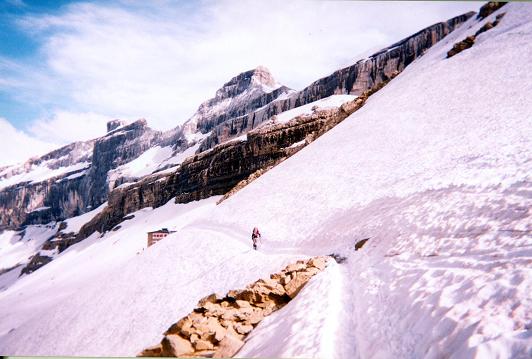Blogs actualizados recientemente:
Aún no tienes usuario?
Regístrarse
Cita
BoogieMan
Lo que yo no entiendo es la teoría de "hidratación de la suela", cuando esta es de polietileno, que es un material completamente hidrorepelente, 100% impermeable al agua. Es como lo de "nutrir la suela"... Nutrir un material inerte, inorgánico?? Pa qué??

Cita
Jairo
Cita
carloski66
Estoy con erdeibi, no es porosa, la cera se aloja en las microcavidades del polietileno. Tambien coincido en que coloquialmente siempre se ha dicho "hidratar la suela".
Aaadios,
Carloski,
así todos contentos


Cita
erdeibi
Cita
Jairo
Cita
carloski66
Estoy con erdeibi, no es porosa, la cera se aloja en las microcavidades del polietileno. Tambien coincido en que coloquialmente siempre se ha dicho "hidratar la suela".
Aaadios,
Carloski,
así todos contentos

Como dice Pocholo: ya puestos....la verdad es que hay varias acepciones de poro/porosidas/poroso
y según la apliquemos todos tenemos razón:
Porosidad:
- Material que tiene poros; poro: pequeña cavidad entre las particulas o moleculas de un material solido
- Material cuyos poros permite el paso de gases o líquidos a través del mismo (hormigón, arcilla, etc)
Creo que lo que no admite discusión es la definición de hidratar a pesar que lo utilicemos coloquialmente.
Y lo que nos falta a todos que por la noche le pongamos una "crema de contorno de cantos"
Saludos cordiales
erdeibi




Cita
bob lawrie
Tenía esto mirado, habla del polietileno de las suelas....
Chris Talbot, ESA
January 6, 2003
Ski Base Construction
Ski bases are made of a hydrocarbon called polyethylene. All hydrocarbons are chemical
compounds containing carbon (C) and hydrogen (H) atoms. Basic hydrocarbons are chains of C
atoms each having two H atoms attached with a H atom on each end (U. S. M.).
Figure 2: Sample Hydrocarbon Chemical Makeup
H H H
I I I
H – C – C – C – H Hydrocarbon (propano)
I I I
H H H
Polyethylene is a compound containing thousands of CH2’s. The longer the chain of CH2’s, the
higher the melting point (Brescia 1974)(Murphy 1969)(Hart 1972). Because polyethylene has
very long chains, its melting point is very high. Although the bottom of a ski looks smooth to
the naked eye, it actually has a fine texture made up of hair-like strands. To create this structure,
fine particles of polyethylene are polymerized into a crystalline material by a process called
“sintering”, which uses heat and pressure to change the original substance.
This structure creates are gaps and spaces where wax can be absorbed like water into a sponge.
When wax is applied to a ski base, it is melted and then ironed into a thin layer. When cool, the
excess is scraped away and then even more excess is removed from the base with a stiff brush.
After this process, a very thin layer of wax coats the polyethylene and fills the deepest gaps.
This application process maintains the rough structure of the ski base so that only some of the ski
touches the snow. If more wax was left on, then more of the ski would touch the snow and that
would create more friction.




Rellena los siguientes campos para contactar con los editores del blog:
Si crees que la oferta es errónea, incompleta o induce a errores, por favor, háznoslo saber: